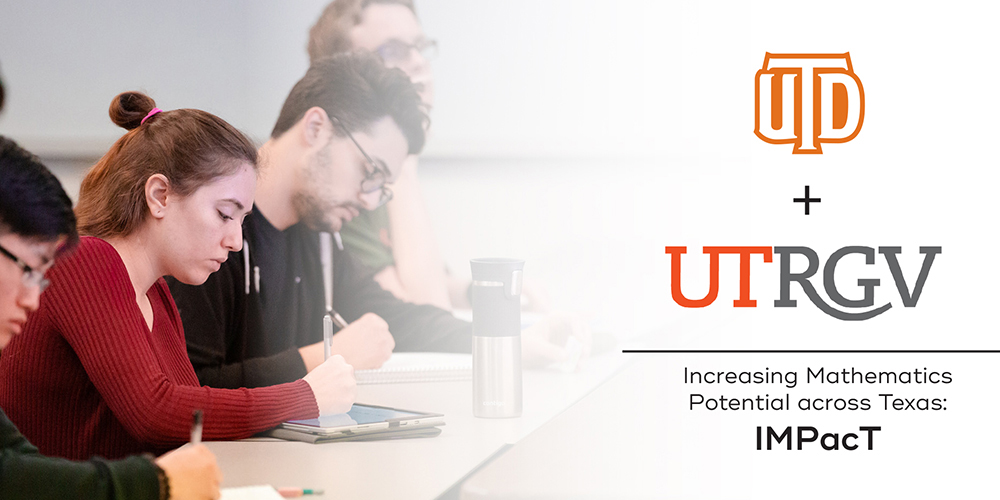
“Mathematics is a vibrant profession, with many diverse opportunities, but that knowledge has not reached the wider community, even among university students, so we want to showcase the many career possibilities.”
– Dr. Vladimir Dragovic, professor and head of the Department of Mathematical Sciences at UT Dallas
As part of IMPacT, Dragovic and his colleagues developed hybrid versions of five of the most advanced undergraduate math courses—Abstract Algebra 2, Mathematical Analysis 2, numerical analysis, problem solving and mathematical statistics—blending online instruction with in-person interaction.
Good performance in these courses indicates to PhD admission committees that a student is well-prepared for the rigors of a doctoral program, Dragovic said.
In January both campuses began teaching the first two classes—Abstract Algebra 2 and Mathematical Analysis 2—with 65 students at UT Dallas and 12 at UTRGV. The format involves synchronous teaching, where students at each institution—some 550 miles apart—attend at the same time and are linked via videoconferencing.
Another component of IMPacT involves leveraging UT Dallas’ ties with companies and government agencies in North Texas to identify opportunities for students of both universities to get involved in industry-related research.
“Mathematics is a vibrant profession, with many diverse opportunities, but that knowledge has not reached the wider community, even among university students, so we want to showcase the many career possibilities,” Dragovic said.
In addition, UT Dallas will offer students from both universities summer boot camps to enhance problem-solving and communication skills, cultivate research aptitude and assist in navigating the application process to a PhD program.
“We have built this joint infrastructure between two geographically distant universities with distinct student populations and resources, and we hope it will serve as a national model,” Dragovic said.